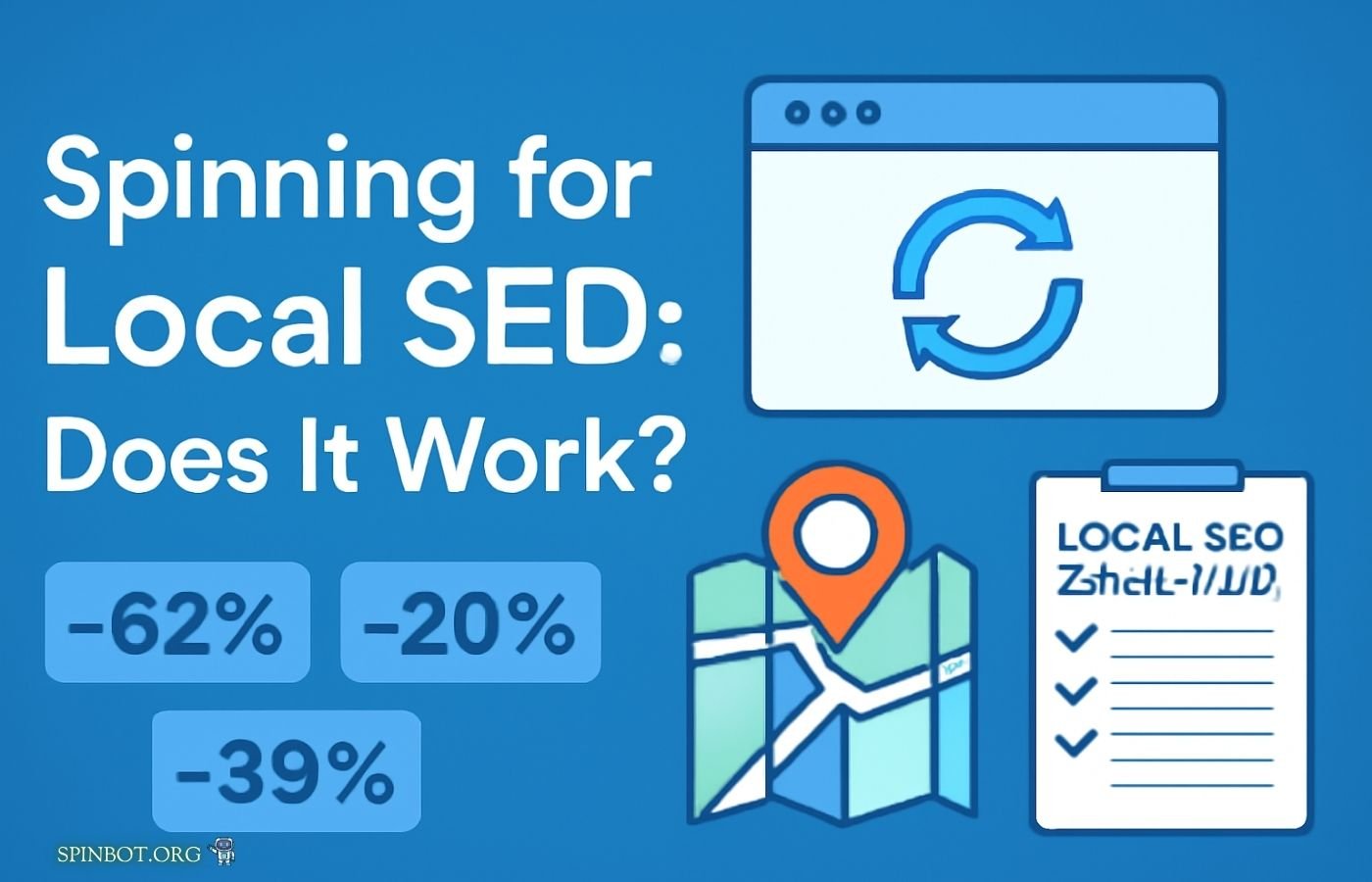What is Local SEO?
Local SEO refers to the practice of optimizing your online presence to appear in local search results. Unlike general SEO, which targets a global audience, local SEO focuses on attracting customers in a specific geographic area. This makes it particularly valuable for small businesses that want to reach customers within their local community.
For example, if someone searches for “pizza near me” or “best plumber in [city name],” they are looking for services within their local area. Ranking high in local search results means that your business will be more visible to potential customers in your region.
Key Elements of Local SEO:
Google My Business (GMB): Having a verified and optimized GMB profile is crucial for appearing in local search results.
NAP Consistency: NAP stands for Name, Address, and Phone number. Keeping this information consistent across directories and websites helps build trust with search engines.
Local Listings: Getting listed on local business directories and review platforms like Yelp, Yellow Pages, and Foursquare boosts your local visibility.
Customer Reviews: Positive reviews on platforms like Google and Yelp signal credibility and improve rankings.
What is Content Spinning?
Content spinning is the practice of rewriting or rephrasing existing content to create multiple versions of the same article, blog post, or webpage. The goal is to generate new content quickly, without having to start from scratch each time. This is often done using automated tools, but it can also be done manually.
While the idea behind content spinning is to produce unique content at scale, it often results in low-quality, awkwardly written text that doesn’t add much value for users. In the past, content spinning was considered a shortcut to producing large volumes of content for SEO purposes. However, modern search engines, especially Google, have become much better at detecting spun content and penalizing websites for it.
Content Spinning Tools:
Spinbot
SpinnerChief
The Best Spinner
Does Content Spinning Work for Local SEO?
Now, let’s answer the key question: Does spinning for local SEO work?
In short, the answer is no. Content spinning for local SEO is generally not a good strategy. While it may seem like a shortcut to generating content and boosting your rankings, the reality is that spun content is often deemed low-quality by search engines. Google, in particular, is excellent at detecting spun content and will penalize websites that rely on it.
Why Content Spinning Doesn’t Work for Local SEO:
Low-Quality Content: Spun content tends to be awkward and difficult to read. Search engines are increasingly focused on user experience, and low-quality content can drive visitors away.
Duplicate Content: Spinning content often results in duplicate or very similar content across multiple pages. Google penalizes websites for having duplicate content.
Risk of Penalties: Content spinning can trigger penalties from Google’s algorithms like Panda and Penguin, which specifically target low-quality and spammy content practices.
The Role of the Google Local Pack in Local SEO
One of the key elements of local search is the Local Pack, also known as the “Map Pack.” This is the area that appears at the top of Google search results when users search for a local service or business. It includes a map with three local business listings, each with the business name, address, phone number, and a link to the website.
How to Appear in the Local Pack:
Optimize Your Google My Business (GMB) Profile: Ensure that your GMB profile is fully optimized, including accurate contact details, business hours, and service areas.
Encourage Customer Reviews: Positive reviews can help boost your visibility in the Local Pack.
Optimize for Local Keywords: Use keywords that include your city or region to help your business appear in local search results.
Ensure NAP Consistency: Consistency in your business’s name, address, and phone number across all platforms is critical for appearing in the Local Pack.
Local SEO Step-by-Step: A Simple Guide
If you want to improve your rankings and appear in the Local Pack, follow this step-by-step guide for Local SEO.
Step 1: Optimize Your Google My Business Listing
Claim and verify your listing on Google.
Fill in all the details, including business name, address, phone number, website, and operating hours.
Add high-quality images and a detailed business description.
Select the correct categories for your business to ensure it shows up for relevant searches.
Step 2: Conduct Keyword Research for Local SEO
Identify local keywords: Include your city, neighborhood, or region in your target keywords (e.g., “best Italian restaurant in [city name]”).
Use Google’s Keyword Planner to find popular search terms that local customers are using.
Incorporate local keywords into your website’s title tags, meta descriptions, and content.
Step 3: Optimize On-Page SEO
Include local keywords naturally within your website’s content.
Add location-based pages: If your business operates in multiple areas, create separate landing pages targeting each location.
Add schema markup: Use Local Business Schema to help search engines understand your business and its location.
Step 4: Build Local Backlinks
Get listed in local directories like Yelp, Foursquare, and Yellow Pages.
Collaborate with local businesses for partnerships and backlink opportunities.
Sponsor local events or participate in local initiatives to gain backlinks from local news outlets.
Step 5: Encourage Customer Reviews
Ask satisfied customers to leave reviews on Google and other review platforms.
Respond to reviews to show that you value customer feedback and engage with your audience.
Step 6: Track and Measure Results
Use Google Analytics to track traffic and conversions.
Monitor your rankings for local keywords.
Track your Google My Business Insights to understand how customers are finding your business.
Why Local SEO is Important for Small Businesses
For small businesses, local SEO is a game-changer. Here’s why:
Increased Visibility: Local SEO helps your business show up in local search results, making it easier for potential customers in your area to find you.
Cost-Effective Marketing: Compared to traditional advertising methods, local SEO is much more affordable and offers long-term results.
Higher Conversion Rates: People who search locally are more likely to make a purchase or visit your business, leading to higher conversion rates.
Increased Competition: If you’re not focusing on local SEO, your competitors likely are. Neglecting local SEO can lead to missed opportunities and loss of market share.
Local SEO Checklist
To ensure your local SEO strategy is on the right track, follow this comprehensive checklist:
Claim and Optimize Google My Business Profile
Use Local Keywords in Website Content
Ensure NAP Consistency Across Directories
Encourage Customer Reviews and Respond to Them
Optimize Website for Mobile Users
Build Local Backlinks
Create Localized Content (Blogs, News, Events)
Track SEO Metrics Using Google Analytics
Leverage Local Directories (Yelp, Foursquare)
Does Local SEO Still Work?
Yes, local SEO still works and is an essential component for any business that wants to attract local customers. As more people use mobile devices and voice search to find local services, the importance of appearing in local search results continues to grow. Local SEO is one of the most effective ways for small businesses to compete in a crowded marketplace.
How Long Does It Take for Local SEO to Work?
Local SEO is not an overnight process. It can take anywhere from a few weeks to several months to see noticeable improvements in rankings and traffic. The timeline depends on factors like the competitiveness of your industry, the effectiveness of your SEO efforts, and how well you’ve optimized your website and local listings.
Is Spinning for Local SEO Worth It?
In conclusion, spinning for local SEO does not work. While content spinning might seem like a quick way to produce large volumes of content, it often results in low-quality, duplicate content that can harm your website’s rankings. Instead, focus on creating high-quality, original content that provides real value to your audience.
Local SEO requires consistent effort, but it offers long-term rewards. By following the steps outlined in this article, you can effectively improve your local SEO and attract more customers to your business.

AI writing strategist with hands-on NLP experience, Liam simplifies complex topics into bite-sized brilliance. Trusted by thousands for actionable, future-forward content you can rely on.

